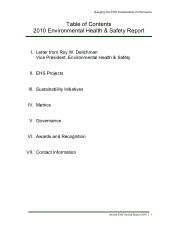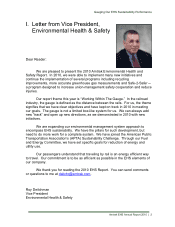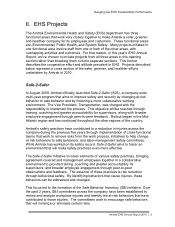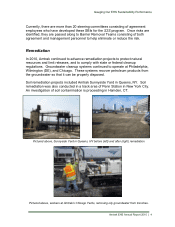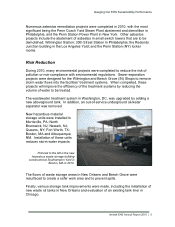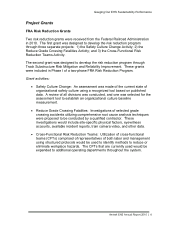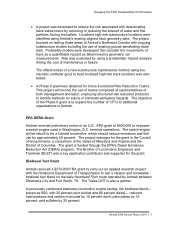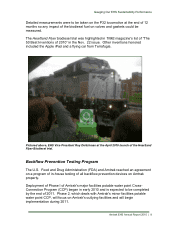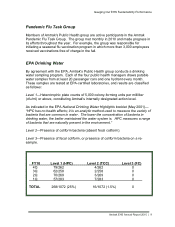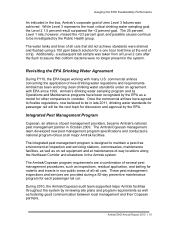Amtrak 2010 Annual Report Download - page 11
Download and view the complete annual report
Please find page 11 of the 2010 Amtrak annual report below. You can navigate through the pages in the report by either clicking on the pages listed below, or by using the keyword search tool below to find specific information within the annual report.
Gauging Our EHS Sustainability Performance
Amtrak EHS Annual Report 2010 | 10
As indicated in the box, Amtrak’s corporate goal of zero Level 3 failures was
achieved. While Level 3 represents the most critical drinking water sampling goal,
the Level 2 1.5 percent result surpassed the <2 percent goal. The 25 percent
Level 1 rate, however, missed the <23 percent goal, and possible causes continue
to be investigated by the Public Health group.
The water tanks and lines of all cars that did not achieve standards were drained
and flushed using a 100 ppm bleach solution for a one hour hold time at the end of
a trip. Additionally, a subsequent lab sample was taken from all Level 2 cars after
the flush to assure that coliform bacteria were no longer present in the system.
Revisiting the EPA Drinking Water Agreement
During FY10, the EPA began working with many U.S. commercial airlines
concerning the application of new drinking water regulations and requirements.
Amtrak has been enforcing clean drinking water standards under an agreement
with EPA since 1993. Amtrak’s drinking water sampling program and its
Operations and Maintenance programs have been recognized by the EPA as a
model for other companies to consider. Once the commercial airlines have agreed
to finalize regulations, now believed to be in late 2011, drinking water standards for
passenger rail will be the next topic for discussion and approval by the EPA.
Integrated Pest Management Program
Copesan, an alliance of pest management providers, became Amtrak’s national
pest management partner in October 2009. The Amtrak/Copesan management
team developed new pest management program specifications and conducted a
national program rollout at all major Amtrak facilities.
The integrated pest management program is designed to maintain a pest-free
environment at inspection and servicing stations, commissaries, maintenance
facilities, as well as on rail equipment and at maintenance-of-way locations along
the Northeast Corridor and elsewhere in the Amtrak system.
The Amtrak/Copesan program requirements are a combination of several pest
management procedures, such as inspections, residual application, and baiting for
rodents and insects in non-public areas of all rail cars. These pest management
inspections and services are provided during a 92-day preventive maintenance
program for each passenger rail car.
During 2010, the Amtrak/Copesan audit team supported major Amtrak facilities
throughout the system by reviewing site plans and program requirements as well
as fostering good communication between local management and their Copesan
partners.


